|
December 2006
By Sandy Leven

The Christmas tree in the centre of Stirling
Christmas is coming and I am getting fat
I'm also getting older, but I don't mind that.
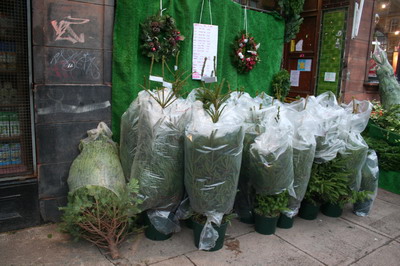
Christmas trees for sale
I realise Christmas is coming when I see heavily laden lorries carrying their loads of cut trees down the A9 from plantations in the North of Scotland down to markets in the south. For all I know they might then travel back up to Scotland to be sold in big garden centres and hardware supermarkets. I still prefer to have a real tree in the house for Christmas but we do have a white[ ! ] fake tree in the surgery.
I think Christmas tree plantations spoil the countryside. I don't to see like the regular shapes of these conifer plantations which appear to have been dropped on the landscape. Their sharp outlines clashing with the natural curves of the landscape.

Plantation in the Cairngorms
I like to see conifers planted in gardens, as long as they are not too big.
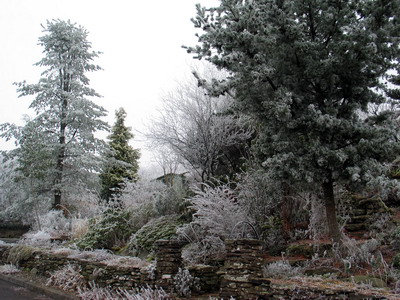
Garden conifers ready for Christmas
I do, however, admire those areas of Scotland where for a couple of hundred years conifers have been planted on entire hillsides and along beside lochs and rivers. These plantings have transformed our Scottish countryside in places like Dunkeld, Blair Athol and the Trossachs. They now look like western Canada. Before David Douglas brought back the magnificent North American conifers, Scotland must have looked quite different. The conifers are so at home here now that they seed themselves around
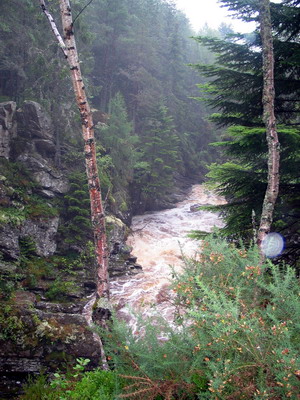
Conifers beside the Falls of Bruar
Before Prince Albert brought the tradition of Christmas trees to Britain, Christmas must have looked different. Who brought the 'traditional' Turkeys?
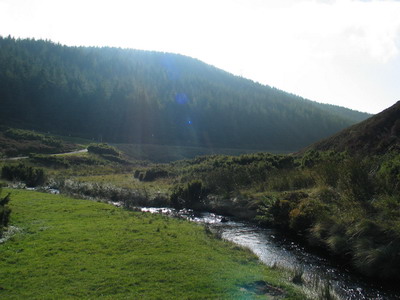
Junipers beside a burn in the Cairngorms with a plantation behind.
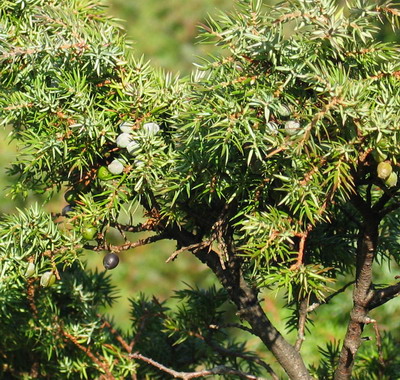
Juniperus communis in the Cairngorms
We are used to our landscape looking as it does now. I attended a lecture in St Andrews many years ago where it was explained that 10,000 years ago our hills were covered in trees and not grass and heather which we now see. The 'Scots' of the day, chopped and burned their way through these trees, clearing whole hillsides and today only remnants remain along burns and in gullies. Campsie Glen, near Lennoxtown, close to Glasgow, is one place where these remnants can still be found.
Farming has changed our mountains. Sheep have eaten up much of the native shrubs and trees on Ben Lawers in Perthshire. The National Trust had fenced some of the mountain off from sheep and is replanting Salix lanata bushes. These have been raised from cuttings from the few lanatas still growing.
Salix lanata makes a superb shrub for the rock garden. If it gets too big, which it invariably does it does it no harm to cut it back. In spring time it has huge upright catkins and its silvery felty leaves are a delight all summer long.
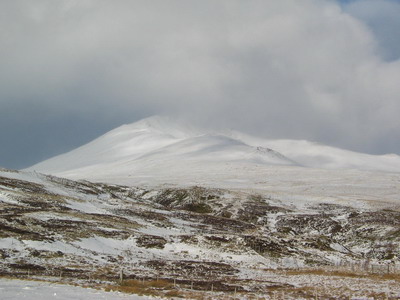
Ben Lawers in February. Not much tree cover.
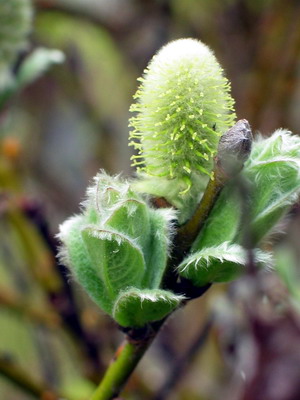
Salix lanata in May in the garden
Near Aviemore, introduced non-native conifers are being eradicated from Abernethy Forest in the cairngorms. When the 'foreigners' are felled, the native Scots pines are revealed. Some have grown into curious shapes and none really look as robust as those individuals which have been allowed to grow unrestricted by competitors. In special places like Aviemore and Ben Lawers it is probably the right thing to do to remove the alien species. At least the crossbills get plenty food and the Ospreys have dead trees on which to build their nests. I bet they are happy to be fishing off the African coast, instead of in Scotland just now!
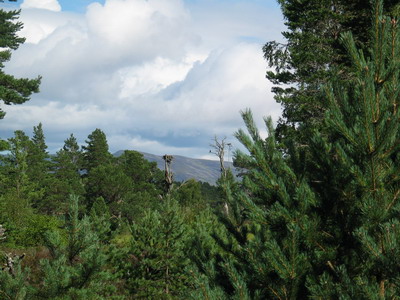
Osprey nest at Boat of Garten
Nevertheless, I like the mature mixed plantations and especially like the huge conifers at places like Scone Palace. Scotland 's landowners and estate owners planted wonderful specimen trees from all over the world. They could not have hoped to see them mature but they still planted them. In our towns and cities Victorian and Edwardian gardeners planted Monkey puzzle trees in most towns and cities. I passed one on my way to primary school every day in Falkland. In Stirling close to my surgery there is a superb Scots Pine and a Monkey Puzzle in the same street. Lebanese and Atlantic Cedars spread out over our streets and redwoods tower above buildings.
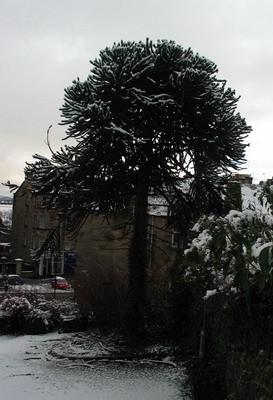
The Monkey Puzzle tree in Irvine Place, Stirling
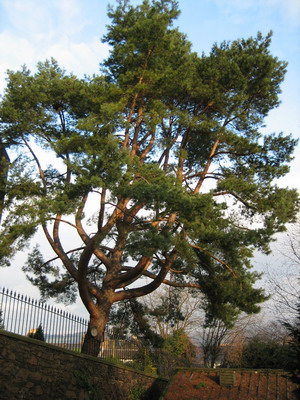
The Scots Pine in Irvine Place, Stirling
INSIDE A NATIONAL TREASURE FOR WARMTH
British gardeners seemed to have voracious appetites for new and different plants and flowers. The rich had gardeners and hot houses. Local authorities built huge greenhouses in which ordinary folk could see cacti and orchids from all over the world. John Kibble built a greenhouse by his home on Loch Long. He was inspired by the Crystal Palace in London. His greenhouse was dismantled and taken to Glasgow by barge to be reassembled and renamed 'The Kibble Palace'. Some greenhouse!

The Kibble Palace
In Glasgow Botanic Garden the magnificent Kibble Palace has just reopened after being completely renovated. From the outside this wonderful Victorian glasshouse resembles a white flying saucer. It is a work of art, which compares well with the finest sculptures. Inside it is being replanted to inspire new generations of visitors. Everyone will want to travel to the antipodes to see tree ferns in their native habitats after admiring the centre piece of the Kibble Palace.

Tree fern in the large dome of the Kibble Palace
The lighting system inside the palace intrigued me. High up near the roof are large discs which I thought at first were lights. They are however, large mirrored reflectors. Beneath each is a bright light which shines up to the mirror and is then directed downwards onto the plants. The effect is to enhance daylight rather than look like spotlighting on the foliage.
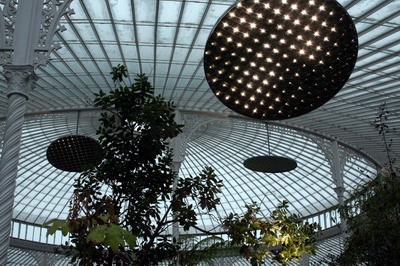
Reflector near the roof
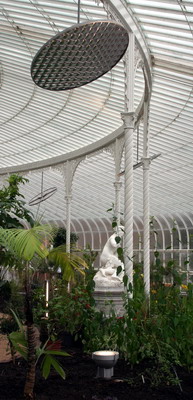
Reflector and ground light
Even in mid December and in this huge greenhouse there is something for the rock gardener. A flowering pant of rhododendron cubittii enticed me to search for its label. It has large flowers held in pairs rather than in the large trusses to which we are accustomed. It is a native of Burma, so is presumably on the tender side. This plant was introduced by Sir Peter Hutchison.
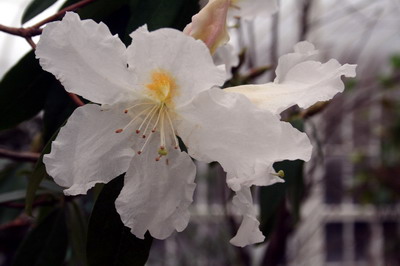
Rhododendron cubittii from Burma
Near the door there are two side wings. One is devoted to plants of the Canary Islands [maybe other Atlantic Islands as well]. The other houses carnivorous plants in displays to attract everyone.
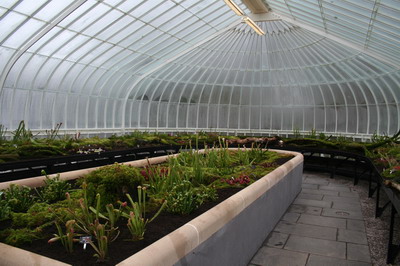
Carnivorous plant area
I was taken with a Pinguicola with 6inch stems and large flowers [like P. alpina on speed!]. This was Pinguicola TINA.
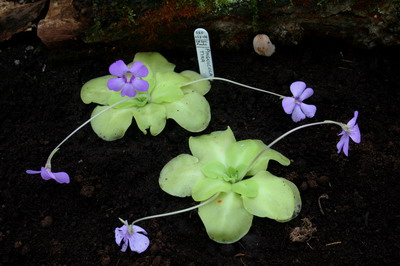
Pinguicola TINA
As well as Droseras, sundews, in here there were also lots of Saracenias. Some were only an inch high. I liked these very much
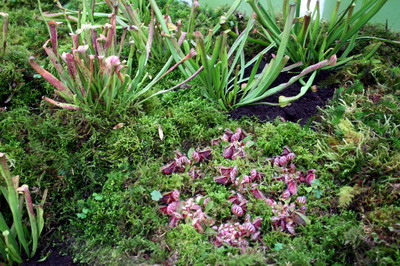
The other greenhouses at Glasgow Botanic Garden supplied a nice Christmassy picture of seasonal Poinsetias in the hotter greenhouse.
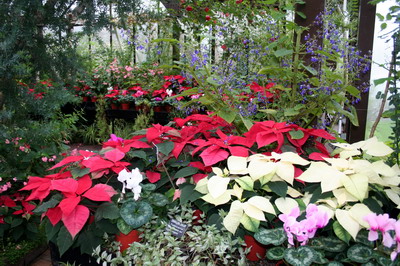
Glasgow Botanic Garden has a world famous orchid collection. These exotic flowers brighten the dreich days of winter. Here are four which I coveted.
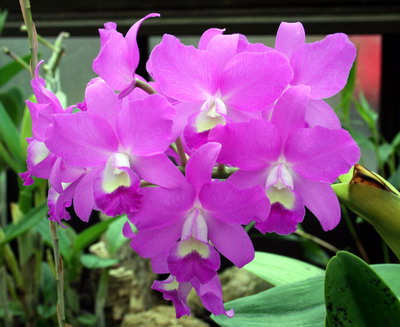
Cattleya 'Porcia'
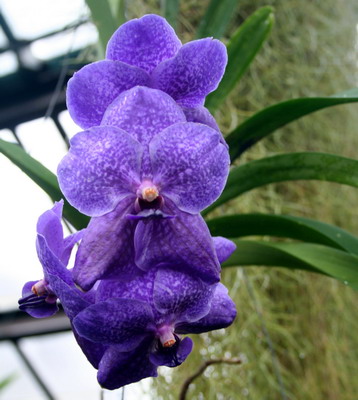
Wanda rothschildiana
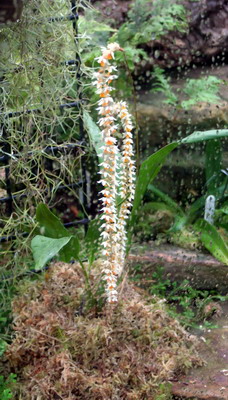
Dendrobium corbianum
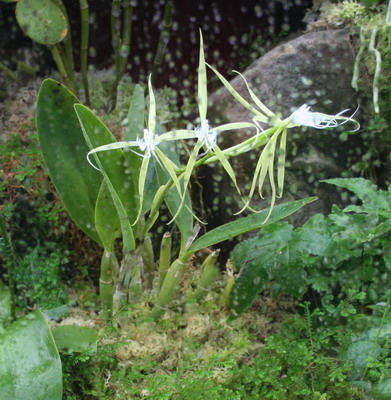
Epidendron ciliare, behind water speckled glass
The plants in the Kibble Palace may not be hardy alpines but they do have cousins which we can grow in our gardens and alpine houses. With global warming and people buying homes abroad perhaps more of us than we imagine may be growing these treasures quite soon.
^ back to the top ^
|

